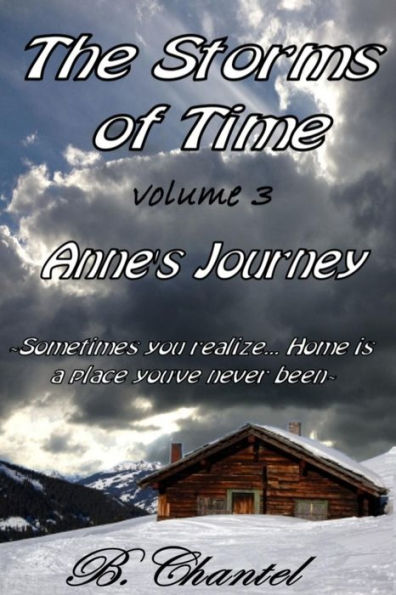Home
I've Been to Many Places
Barnes and Noble
Loading Inventory...
I've Been to Many Places
Current price: $16.99

Barnes and Noble
I've Been to Many Places
Current price: $16.99
Loading Inventory...
Size: OS
*Product information may vary - to confirm product availability, pricing, shipping and return information please contact Barnes and Noble
Is there a better way to hear where a jazz musician is in his development than aurally examining the various places he's visited? For pianist/composer
Matthew Shipp
, the answer is "no." On
I've Been to Many Places
, he does exactly that over 17 cuts; he re-envisions solo work he's recorded previously with ensembles -- original and standards -- and juxtaposes it with newer compositions. Together they reveal the way
Shipp
's language has unfolded from a system he's had in place since the beginning, one that has added numerous dialects in its articulation. Commencing with the title track,
pulls back the curtain on the complexities of his contrapuntal approach as it relates to his notions of harmony, space, time, and tonal inquiry. It's followed by a reading of "Summertime" -- he first recorded it as a member of
the David S. Ware Quartet
in 1995 on
Earthquation
. Minus the interaction of the quartet,
explores the melody and bridge in the lower and lower-middle registers of the piano and underscores the way they move toward one another by separating them in his improvisation. His version of the pop-soul tune "Where Is the Love?" is done at a tempo similarly employed by
Phineas Newborn, Jr.
from a medley on 1975's
Solo Piano
recording. But
's is an octave lower, employing dissonance where necessary for the tune to open itself up to inquiry rather than just melodic restatement; he then inserts his own beautiful ballad "Light Years" between the tune's two sections. The fleet, ghostly take on
John Coltrane
's "Naima" differs considerably from the duo recording with
Mat Maneri
that appeared back in 2003. There is less force, and far more detail and nuance, in its dynamic approach. Covers aside,
's compositions (old and new) are what offer the most satisfaction. "Waltz" and "Reflex" were originally recorded with his string trio (
William Parker
and
Maneri
) in 2001. Sequenced together, they are lithe, full of melodic investigation along a singular improvisational line. The use of
Thelonious Monk
in "Brain Stem Grammer" employs hard right turns to embrace not a single harmonic line, but three simultaneously, all underscored with fantastic rumbling bass notes as a spine. "Life Cycle" opens almost classically before the tune reaches for the full color spectrum spatially and harmonically. The implication of swing in the knotty "Blue Astral Bodies" sets a new boundary for "modern creative jazz," while closer "Cosmic Wave" illustrates the timbres in
's vast chordal system and his disciplined engagement with dynamics in his improvisation.
sounds like the record
had to make for his own edification, one that chronicles his expansive, fearless push toward the spirit of the unknown with purpose, one that deepens and widens the already expansive reach of his language. ~ Thom Jurek
Matthew Shipp
, the answer is "no." On
I've Been to Many Places
, he does exactly that over 17 cuts; he re-envisions solo work he's recorded previously with ensembles -- original and standards -- and juxtaposes it with newer compositions. Together they reveal the way
Shipp
's language has unfolded from a system he's had in place since the beginning, one that has added numerous dialects in its articulation. Commencing with the title track,
pulls back the curtain on the complexities of his contrapuntal approach as it relates to his notions of harmony, space, time, and tonal inquiry. It's followed by a reading of "Summertime" -- he first recorded it as a member of
the David S. Ware Quartet
in 1995 on
Earthquation
. Minus the interaction of the quartet,
explores the melody and bridge in the lower and lower-middle registers of the piano and underscores the way they move toward one another by separating them in his improvisation. His version of the pop-soul tune "Where Is the Love?" is done at a tempo similarly employed by
Phineas Newborn, Jr.
from a medley on 1975's
Solo Piano
recording. But
's is an octave lower, employing dissonance where necessary for the tune to open itself up to inquiry rather than just melodic restatement; he then inserts his own beautiful ballad "Light Years" between the tune's two sections. The fleet, ghostly take on
John Coltrane
's "Naima" differs considerably from the duo recording with
Mat Maneri
that appeared back in 2003. There is less force, and far more detail and nuance, in its dynamic approach. Covers aside,
's compositions (old and new) are what offer the most satisfaction. "Waltz" and "Reflex" were originally recorded with his string trio (
William Parker
and
Maneri
) in 2001. Sequenced together, they are lithe, full of melodic investigation along a singular improvisational line. The use of
Thelonious Monk
in "Brain Stem Grammer" employs hard right turns to embrace not a single harmonic line, but three simultaneously, all underscored with fantastic rumbling bass notes as a spine. "Life Cycle" opens almost classically before the tune reaches for the full color spectrum spatially and harmonically. The implication of swing in the knotty "Blue Astral Bodies" sets a new boundary for "modern creative jazz," while closer "Cosmic Wave" illustrates the timbres in
's vast chordal system and his disciplined engagement with dynamics in his improvisation.
sounds like the record
had to make for his own edification, one that chronicles his expansive, fearless push toward the spirit of the unknown with purpose, one that deepens and widens the already expansive reach of his language. ~ Thom Jurek
Is there a better way to hear where a jazz musician is in his development than aurally examining the various places he's visited? For pianist/composer
Matthew Shipp
, the answer is "no." On
I've Been to Many Places
, he does exactly that over 17 cuts; he re-envisions solo work he's recorded previously with ensembles -- original and standards -- and juxtaposes it with newer compositions. Together they reveal the way
Shipp
's language has unfolded from a system he's had in place since the beginning, one that has added numerous dialects in its articulation. Commencing with the title track,
pulls back the curtain on the complexities of his contrapuntal approach as it relates to his notions of harmony, space, time, and tonal inquiry. It's followed by a reading of "Summertime" -- he first recorded it as a member of
the David S. Ware Quartet
in 1995 on
Earthquation
. Minus the interaction of the quartet,
explores the melody and bridge in the lower and lower-middle registers of the piano and underscores the way they move toward one another by separating them in his improvisation. His version of the pop-soul tune "Where Is the Love?" is done at a tempo similarly employed by
Phineas Newborn, Jr.
from a medley on 1975's
Solo Piano
recording. But
's is an octave lower, employing dissonance where necessary for the tune to open itself up to inquiry rather than just melodic restatement; he then inserts his own beautiful ballad "Light Years" between the tune's two sections. The fleet, ghostly take on
John Coltrane
's "Naima" differs considerably from the duo recording with
Mat Maneri
that appeared back in 2003. There is less force, and far more detail and nuance, in its dynamic approach. Covers aside,
's compositions (old and new) are what offer the most satisfaction. "Waltz" and "Reflex" were originally recorded with his string trio (
William Parker
and
Maneri
) in 2001. Sequenced together, they are lithe, full of melodic investigation along a singular improvisational line. The use of
Thelonious Monk
in "Brain Stem Grammer" employs hard right turns to embrace not a single harmonic line, but three simultaneously, all underscored with fantastic rumbling bass notes as a spine. "Life Cycle" opens almost classically before the tune reaches for the full color spectrum spatially and harmonically. The implication of swing in the knotty "Blue Astral Bodies" sets a new boundary for "modern creative jazz," while closer "Cosmic Wave" illustrates the timbres in
's vast chordal system and his disciplined engagement with dynamics in his improvisation.
sounds like the record
had to make for his own edification, one that chronicles his expansive, fearless push toward the spirit of the unknown with purpose, one that deepens and widens the already expansive reach of his language. ~ Thom Jurek
Matthew Shipp
, the answer is "no." On
I've Been to Many Places
, he does exactly that over 17 cuts; he re-envisions solo work he's recorded previously with ensembles -- original and standards -- and juxtaposes it with newer compositions. Together they reveal the way
Shipp
's language has unfolded from a system he's had in place since the beginning, one that has added numerous dialects in its articulation. Commencing with the title track,
pulls back the curtain on the complexities of his contrapuntal approach as it relates to his notions of harmony, space, time, and tonal inquiry. It's followed by a reading of "Summertime" -- he first recorded it as a member of
the David S. Ware Quartet
in 1995 on
Earthquation
. Minus the interaction of the quartet,
explores the melody and bridge in the lower and lower-middle registers of the piano and underscores the way they move toward one another by separating them in his improvisation. His version of the pop-soul tune "Where Is the Love?" is done at a tempo similarly employed by
Phineas Newborn, Jr.
from a medley on 1975's
Solo Piano
recording. But
's is an octave lower, employing dissonance where necessary for the tune to open itself up to inquiry rather than just melodic restatement; he then inserts his own beautiful ballad "Light Years" between the tune's two sections. The fleet, ghostly take on
John Coltrane
's "Naima" differs considerably from the duo recording with
Mat Maneri
that appeared back in 2003. There is less force, and far more detail and nuance, in its dynamic approach. Covers aside,
's compositions (old and new) are what offer the most satisfaction. "Waltz" and "Reflex" were originally recorded with his string trio (
William Parker
and
Maneri
) in 2001. Sequenced together, they are lithe, full of melodic investigation along a singular improvisational line. The use of
Thelonious Monk
in "Brain Stem Grammer" employs hard right turns to embrace not a single harmonic line, but three simultaneously, all underscored with fantastic rumbling bass notes as a spine. "Life Cycle" opens almost classically before the tune reaches for the full color spectrum spatially and harmonically. The implication of swing in the knotty "Blue Astral Bodies" sets a new boundary for "modern creative jazz," while closer "Cosmic Wave" illustrates the timbres in
's vast chordal system and his disciplined engagement with dynamics in his improvisation.
sounds like the record
had to make for his own edification, one that chronicles his expansive, fearless push toward the spirit of the unknown with purpose, one that deepens and widens the already expansive reach of his language. ~ Thom Jurek









![Ive Tried Everything But Therapy (Part 2) [Milky Clear Vinyl] [Barnes & Noble Exclusive]](https://prodimage.images-bn.com/pimages/0093624836438_p0_v2_s600x595.jpg)







